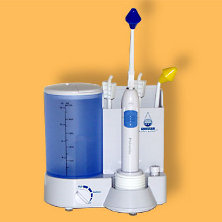Dry mouth, a conditional also known as xerostomia, is reported to affect a third of the US adult population. There are two main causes for xerostomia. The first is aging. Saliva production naturally decreases as we grow older. The second most common cause is medication. More than 600 different types of medication site dry mouth as a common side effective. Medication for everything from allergy to blood pressure can lead to xerostomia. While not as popular as aging and medication, there are other possible causes of dry mouth including dehydration, chemotherapy, Sjögrens Syndrome, Parkinson’s Disease, diabetes and a variety of autoimmune diseases.
An adult should produce between four and six cups of salvia daily. If your mouth produces significantly fewer than four cups of saliva, a number of unpleasant side effects may arise. Some of these symptoms include:
- Mild to severe mild dryness
- A burning sensation on the tongue and/or oral tissues
- Chronic halitosis / bad breath
- Gum disease
- Increased tooth decay
- Difficultly eating drier foods
- A change in taste or speech
- Cracks at the corners of the mouth
- Difficulty swallowing
If you are suffering from xeostamia, there are a number of strategies you can employ to alleviate symptoms, including:
- Stay hydrated, drink 8 or more glasses of water each day
- Avoid excessive alcohol, including alcohol based mouth rinses
- Avoid tobacco, caffeine, carbonated beverages and spicy food
- Use products for dry mouth such as saliva producing lozenges and sprays
If you suspect your dry mouth is the result of a medication you are taking, talk to your doctor about possible alternatives. If symptoms persist, speak with you doctor about other possible causes. You may need to be tested for autoimmune diseases that may be attacking your moisture-producing glands.
About the Author: Dr. Anthony Dailley has been practicing dentistry since 1981 and specializes in curing bad breath solutions. He has a degree in Cell & Molecular Biology from San Francisco State University and a dental degree from the University of the Pacific School of Dentistry. Dr Dailley founded the Center for Breath Treatment, a specialty halitosis clinic located in the bay area. He also currently conducts research pertaining to halitosis products at the California Pacific Lab facility in Novato California. Dr. Dailley is also one of the founders and also on the board of directors of NovaBay Pharmaceuticals which is a publicly held biopharmaceutical company.


